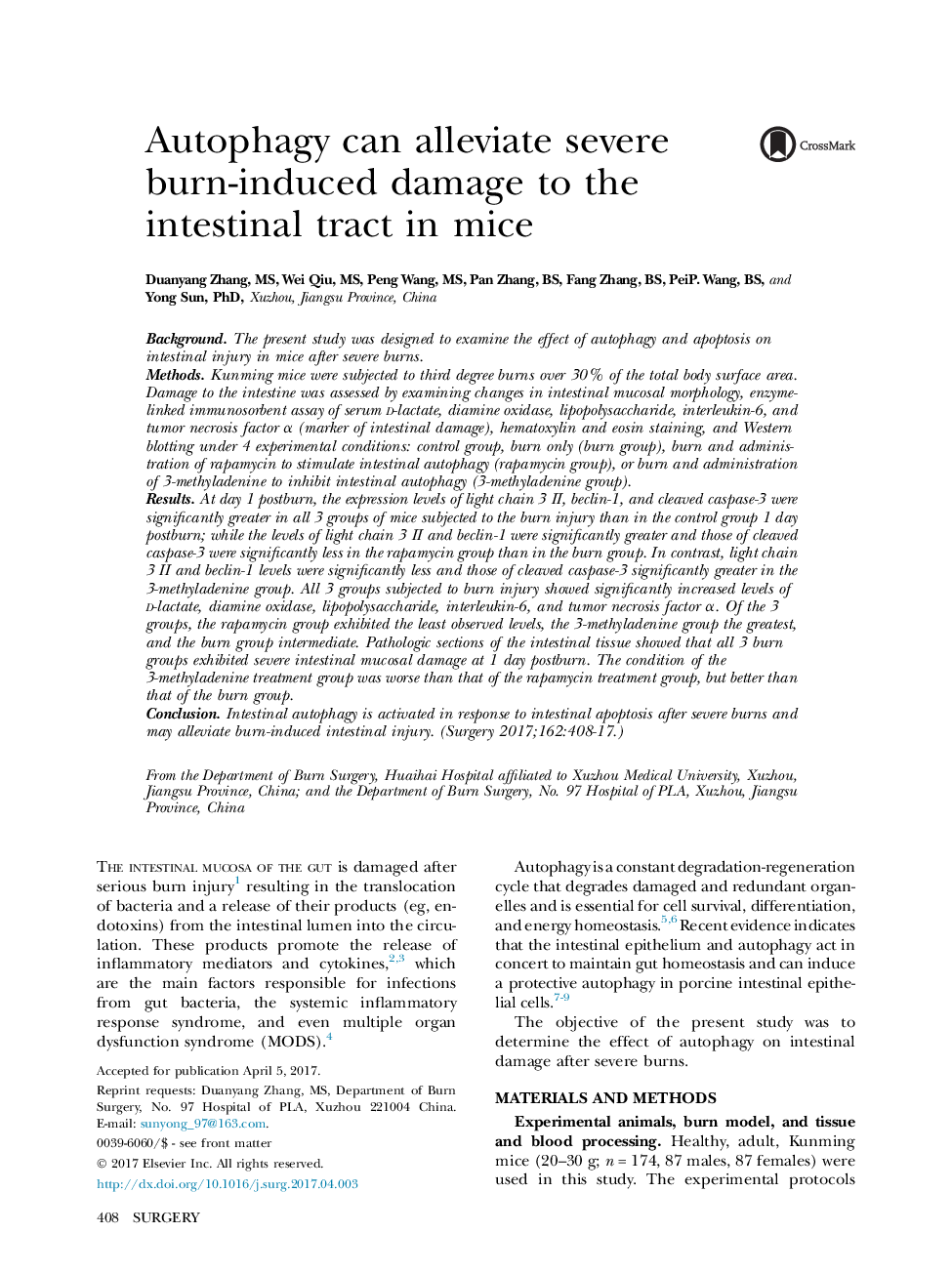| کد مقاله | کد نشریه | سال انتشار | مقاله انگلیسی | نسخه تمام متن |
|---|---|---|---|---|
| 5734697 | 1411839 | 2017 | 10 صفحه PDF | دانلود رایگان |
BackgroundThe present study was designed to examine the effect of autophagy and apoptosis on intestinal injury in mice after severe burns.MethodsKunming mice were subjected to third degree burns over 30% of the total body surface area. Damage to the intestine was assessed by examining changes in intestinal mucosal morphology, enzyme-linked immunosorbent assay of serum d-lactate, diamine oxidase, lipopolysaccharide, interleukin-6, and tumor necrosis factor α (marker of intestinal damage), hematoxylin and eosin staining, and Western blotting under 4 experimental conditions: control group, burn only (burn group), burn and administration of rapamycin to stimulate intestinal autophagy (rapamycin group), or burn and administration of 3-methyladenine to inhibit intestinal autophagy (3-methyladenine group).ResultsAt day 1 postburn, the expression levels of light chain 3 II, beclin-1, and cleaved caspase-3 were significantly greater in all 3 groups of mice subjected to the burn injury than in the control group 1 day postburn; while the levels of light chain 3 II and beclin-1 were significantly greater and those of cleaved caspase-3 were significantly less in the rapamycin group than in the burn group. In contrast, light chain 3 II and beclin-1 levels were significantly less and those of cleaved caspase-3 significantly greater in the 3-methyladenine group. All 3 groups subjected to burn injury showed significantly increased levels of d-lactate, diamine oxidase, lipopolysaccharide, interleukin-6, and tumor necrosis factor α. Of the 3 groups, the rapamycin group exhibited the least observed levels, the 3-methyladenine group the greatest, and the burn group intermediate. Pathologic sections of the intestinal tissue showed that all 3 burn groups exhibited severe intestinal mucosal damage at 1 day postburn. The condition of the 3-methyladenine treatment group was worse than that of the rapamycin treatment group, but better than that of the burn group.ConclusionIntestinal autophagy is activated in response to intestinal apoptosis after severe burns and may alleviate burn-induced intestinal injury.
Journal: Surgery - Volume 162, Issue 2, August 2017, Pages 408-417
